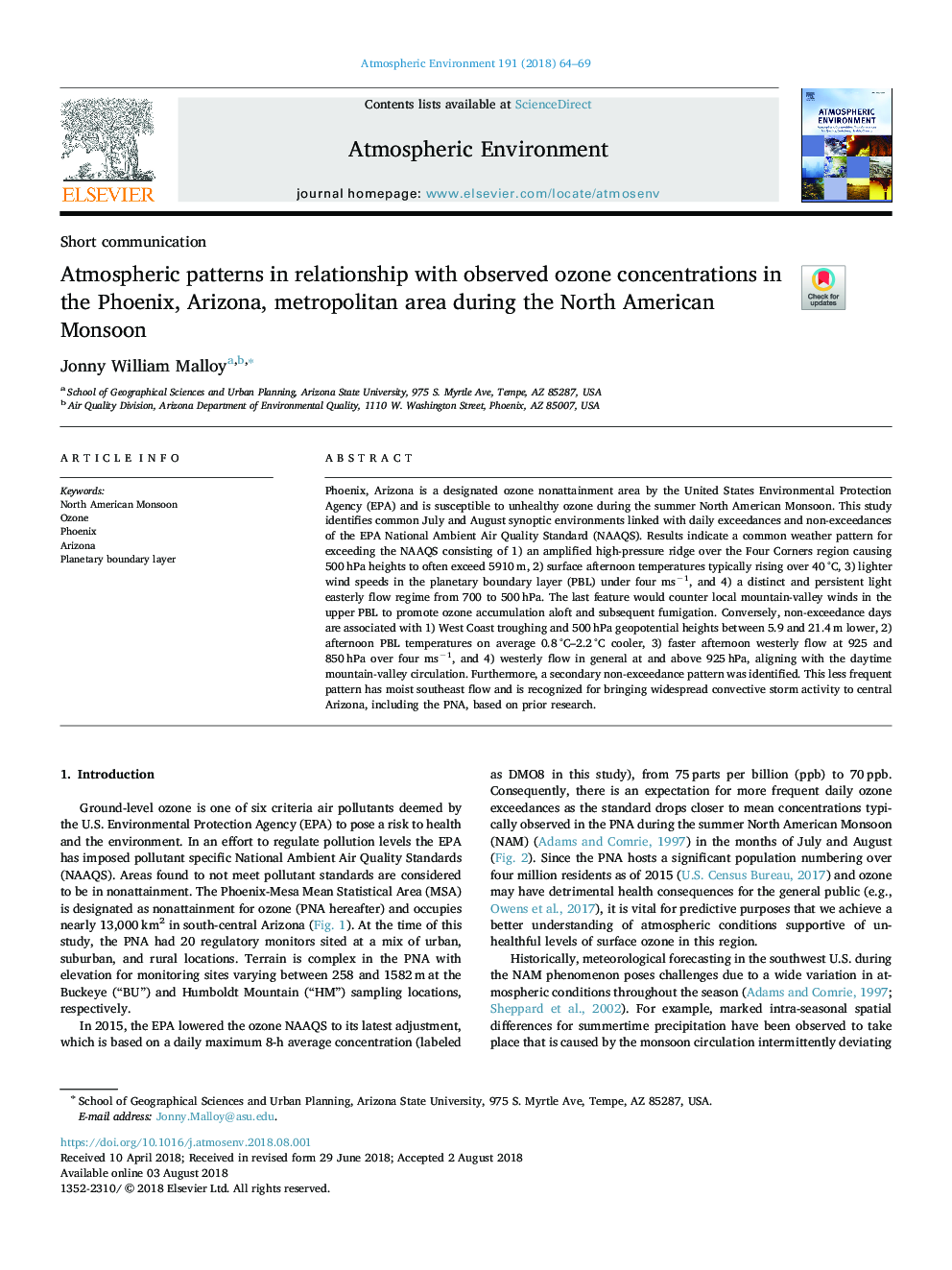| Article ID | Journal | Published Year | Pages | File Type |
|---|---|---|---|---|
| 8863449 | Atmospheric Environment | 2018 | 6 Pages |
Abstract
Phoenix, Arizona is a designated ozone nonattainment area by the United States Environmental Protection Agency (EPA) and is susceptible to unhealthy ozone during the summer North American Monsoon. This study identifies common July and August synoptic environments linked with daily exceedances and non-exceedances of the EPA National Ambient Air Quality Standard (NAAQS). Results indicate a common weather pattern for exceeding the NAAQS consisting of 1) an amplified high-pressure ridge over the Four Corners region causing 500â¯hPa heights to often exceed 5910â¯m, 2) surface afternoon temperatures typically rising over 40â¯Â°C, 3) lighter wind speeds in the planetary boundary layer (PBL) under four msâ1, and 4) a distinct and persistent light easterly flow regime from 700 to 500â¯hPa. The last feature would counter local mountain-valley winds in the upper PBL to promote ozone accumulation aloft and subsequent fumigation. Conversely, non-exceedance days are associated with 1) West Coast troughing and 500â¯hPa geopotential heights between 5.9 and 21.4â¯m lower, 2) afternoon PBL temperatures on average 0.8â¯Â°C-2.2â¯Â°C cooler, 3) faster afternoon westerly flow at 925 and 850â¯hPa over four msâ1, and 4) westerly flow in general at and above 925â¯hPa, aligning with the daytime mountain-valley circulation. Furthermore, a secondary non-exceedance pattern was identified. This less frequent pattern has moist southeast flow and is recognized for bringing widespread convective storm activity to central Arizona, including the PNA, based on prior research.
Related Topics
Physical Sciences and Engineering
Earth and Planetary Sciences
Atmospheric Science
Authors
Jonny William Malloy,
